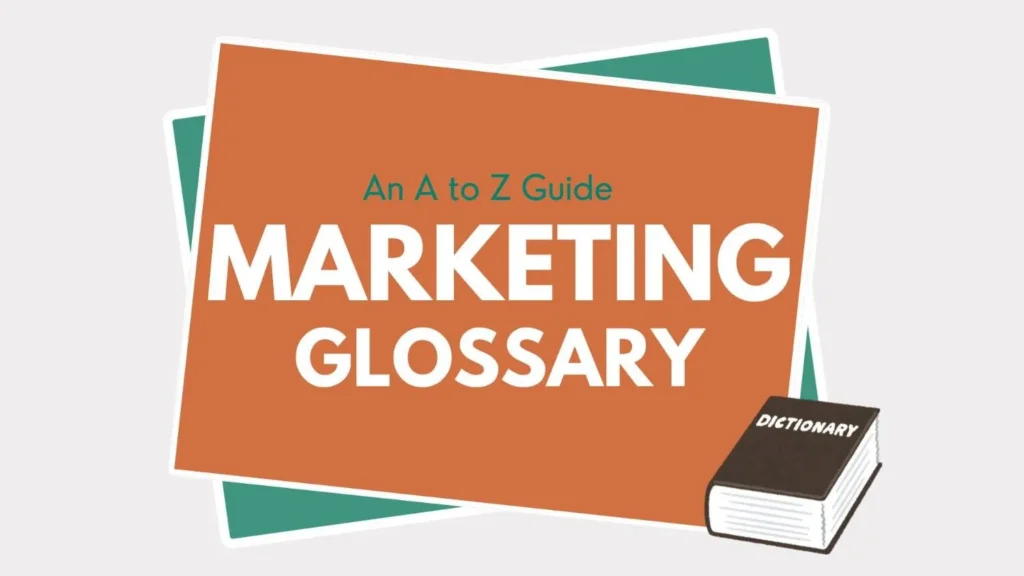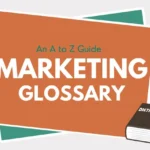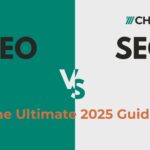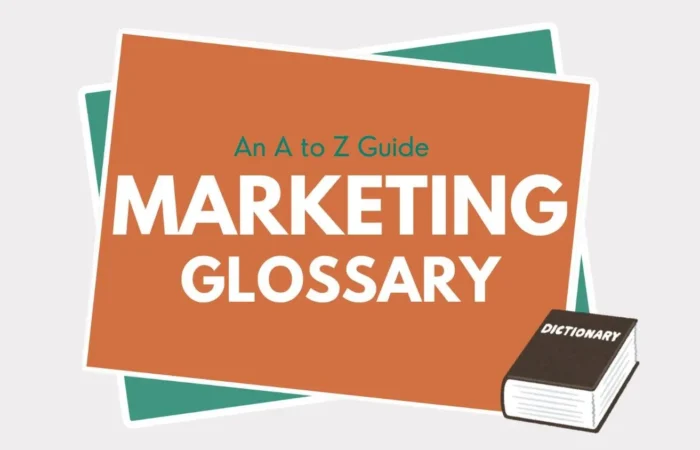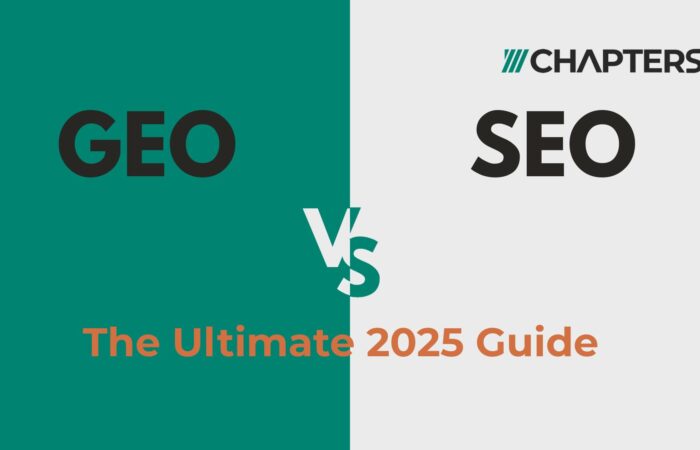#
1P / 3P Data
First-party data is collected directly by you (site, app, CRM); third-party is bought/obtained from others. 1P is durable and privacy-safer; 3P is increasingly restricted.
200 OK
HTTP success status. Useful in SEO diagnostics to confirm pages return a valid, indexable response.
301 Redirect (Permanent)
Server-side redirect signaling a permanent move. Passes most link equity; use when you change URLs or migrate domains. Avoid chains/loops; update internal links to the final URL.
302 Found (Temporary)
Temporary redirect. Use when a page is briefly moved (e.g., tests). Long-term 302s can confuse search engines—swap to 301/308 when permanent.
307 Temporary Redirect
HTTP/1.1+ temporary redirect preserving the HTTP method; preferable to 302 when you must keep POST/GET behavior.
308 Permanent Redirect
HTTP/1.1+ permanent redirect (like 301) that preserves method. Either 301 or 308 is fine if permanent—be consistent.
404 Not Found
Page doesn’t exist. Too many 404s waste crawl budget and harm UX; use helpful 404 pages and fix internal links.
410 Gone
Resource intentionally removed. Stronger “don’t come back” signal to crawlers; use when content is permanently retired.
429 Too Many Requests
HTTP status for rate limiting (common with APIs/CDNs). If Googlebot sees persistent 429s, crawling can slow; monitor server capacity and bot rules.
500 / 503 Server Errors
Server unavailable or failed. Prolonged 5xx errors block crawling/indexing and tank ads/SEO performance; monitor and fix quickly.
7Ps (Marketing Mix)
Product, Price, Place, Promotion, People, Process, Physical Evidence—expanded mix used in service/digital contexts.
A
A/B Test (Split Test)
Controlled experiment comparing two variants to a shared audience, changing one key element (e.g., headline). Success is judged on a pre-declared primary metric (e.g., conversion rate). Guard against small samples and “peeking” early.
Above-the-Fold
The portion of a page visible without scroll. Prioritize value prop, proof, and a primary CTA here to maximize first-impression impact.
Account Structure (Ads)
Hierarchy (campaigns → ad sets/groups → ads) that controls budgets, audiences, placements, and tests. Clean, consistent naming enables reporting and learning.
Acquisition (Channel)
The traffic source bringing users (Organic, Paid Search, Social, Referral, Direct, Email, etc.). Used for budgeting and ROI analysis.
Ad Frequency
Average number of times a person sees your ad. Too high = fatigue/ad blindness; manage with frequency caps, audience expansion, and creative rotation.
Ad Relevance / Quality
Platform score reflecting how well your ad matches intent and delivers expected outcomes. Higher relevance often reduces CPC/CPM.
Ad Schedule (Dayparting)
Set ads to run at specific days/hours to match demand (e.g., business hours) or reduce wasted spend.
Ad Set / Ad Group
Mid-level container where you define targeting, placements, and bids/budgets; it isolates tests to reduce cross-contamination.
Addressable Audience
People you can reach with identifiers (emails, MAIDs, cookies). Shrinking in size as privacy tightens—lean on 1P data and modeled audiences.
Affiliate Marketing
Partners promote you and earn commission per sale/lead. Needs clear attribution rules, fraud checks, and creative guardrails.
AEO (Answer Engine Optimization)
Optimizing content and data so AI “answer engines” (Gemini AI Mode, Perplexity, Copilot) surface your brand directly in answers/snippets/citations.
AI Overviews (Google)
AI-generated summaries shown atop some SERPs, with links to sources. Optimize by providing clear, well-structured, trustworthy content that’s easy to quote/cite.
AI Mode (Google Search)
An optional, more “agentic” search experience built on Gemini with deeper follow-ups and multimodality; distinct from standard results.
ALT Text (Accessibility SEO)
Descriptive image text used by screen readers and search engines; write what’s in the image and its purpose—not keyword stuffing.
Attribution (Modeling)
Method of assigning conversion credit to touchpoints (last-click, first-click, time-decay, position-based, data-driven). Choose based on buying cycle length and channel mix.
Attribution Window
The lookback period for counting a conversion back to a click/view (e.g., 7-day click, 1-day view).
Auction-Time Bidding
Real-time bid adjustments using signals (device, geo, audience) to hit CPA/ROAS targets.
B
Backlink
A link from another site to yours. Quality, relevance, and anchor text matter more than raw count. Avoid manipulative link schemes.
Behavioral Targeting
Uses past actions (views, carts, purchases) to tailor ads/messages. Improves relevance; requires consent and sound data hygiene.
BERT / MUM (Google AI)
Language models that help Google understand queries and content. Design content to answer intents and sub-tasks, not just keywords.
Bid Strategy (Ads)
Manual or automated bidding (tCPA, tROAS, Maximize Conversions). Needs clear goals, sufficient data volume, and stable budgets to learn.
Black Hat SEO
Guideline-violating tricks (cloaking, PBNs). Short-term wins, long-term penalties—avoid.
Bounce Rate / Engagement Rate
Bounce = single-interaction session. In GA4, “Engaged Sessions” is the positive lens (≥10s, conversion, or ≥2 pageviews). Interpret carefully across tools.
Brand Lift
Measured change in metrics like awareness or ad recall via controlled tests (e.g., survey holdouts). Complements performance KPIs.
Brand Safety/Suitability
Controls to avoid unsafe or off-brand content contexts. Use allowlists, blocklists, and suitability tiers.
Breadcrumbs (UX/SEO)
Hierarchical links improving navigation and rich results when marked up with BreadcrumbList schema.
Business Profile (GBP)
Your entity on Google for local search (formerly GMB). Keep NAP, categories, products, posts, and reviews current for local visibility.
Buyer Persona
Evidence-based profile of a segment (needs, barriers, triggers). Drives messaging, offers, and content formats.
C
CAC (Customer Acquisition Cost)
Total cost to acquire one customer (media, fees, incentives) ÷ new customers. Pair with LTV and payback period for viability.
Call-to-Action (CTA)
Clear instruction on what to do next (e.g., “Start Free Trial”). Specific + benefit-oriented CTAs convert better than generic ones.
Canonical Tag / Canonicalization
Tells search engines the preferred version of duplicate/near-duplicate content (e.g., with/without tracking params). Consolidates ranking signals.
CAPI (Conversions API)
Server-side event delivery (Meta, others) that complements pixel tracking; improves resilience and match quality.
CDP (Customer Data Platform)
Unifies 1P data into persistent profiles for activation (ads, email) and insights. Needs identity resolution and consent handling.
Click-Through Rate (CTR)
Clicks ÷ impressions. High CTR suggests relevance, but watch downstream metrics (CPC, CVR, ROAS).
CMS (Content Management System)
Software to create/manage content (e.g., WordPress). Choose for speed, security, extensibility, and editor UX.
Consent Mode v2 (Google)
API that adapts tag behavior to user consent and models conversions when consent is denied—essential in the EEA; ensure ad_user_data and ad_personalization are implemented with your CMP.
Content Decay
Natural decline of traffic to once-performing content; counter with refreshes, redirects, and internal links.
Content Marketing
Planned creation/distribution of valuable content to attract, engage, and convert a defined audience. Requires editorial strategy and measurement beyond vanity metrics.
Conversion
A completed desired action (purchase, lead, signup). Define primary/secondary conversions and keep event names consistent.
Conversion Lift Test
Randomized holdout test to measure incremental conversions, not just correlation. Needs enough power and clean geo/user splits.
Conversion Rate (CVR)
Conversions ÷ visits (or clicks). Improve via intent alignment, speed, clarity, and reduced friction.
Cookie (1P/3P)
Browser storage used for remembering state and measurement. 3P cookies are being deprecated; move to server-side tagging and 1P IDs.
Core Web Vitals (LCP, CLS, INP)
Page speed/UX metrics Google emphasizes. Optimize media sizing, layout stability, and interaction responsiveness.
Cost per Acquisition (CPA)
Spend ÷ acquisitions. Beware channel mix shifts that change lead quality.
CPC / CPM / CPV
Cost per Click / per 1,000 impressions / per View (video). Pick based on objective (traffic, reach, or view).
Crawl Budget
Amount search bots are willing/able to crawl. Improve with fast responses, clean sitemaps, and removing low-value URLs.
Creative Fatigue (Ads)
Performance drop as audiences tire of a creative; rotate hooks, angles, and formats on a cadence.
CRO (Conversion Rate Optimization)
Structured process (research → hypothesis → test → learn) to increase the % of visitors who complete desired actions.
Customer Match (Google/Meta)
Upload hashed 1P lists for targeting, lookalikes, and measurement; mind consent and data retention.
D
Data-Driven Attribution (DDA)
Algorithmic model assigning credit by contribution. Needs enough conversion volume and clean tagging to be reliable.
Data Layer (Tagging)
A normalized object that exposes clean values (product, revenue, user state) to your TMS for consistent tracking.
DCO (Dynamic Creative Optimization)
System that assembles creatives from components to match audience/context in real time. Requires asset feeds and rules/AI guardrails.
Deep Link (App)
Links that route users into specific app views; improves conversion vs. generic opens.
Demand Generation
Activities that create interest and pipeline (content, webinars, paid, communities). Prioritize education and problem-solution fit.
Demand Gen (Google Ads)
Visual, AI-powered campaigns across YouTube/Shorts/Discover/Gmail to create demand before search intent peaks.
Display Advertising
Visual ads (banners, rich media, video) across sites/apps. Balance reach with brand safety and viewability.
Disavow File (SEO)
A last-resort file to tell Google to ignore spammy backlinks; use sparingly after manual review.
DMP (Data Management Platform)
Legacy 3P cookie-centric audience tool; utility is declining—favor CDP + 1P signals.
Domain Authority (Directional)
Proprietary “likelihood to rank” score from SEO tools. Use for relative benchmarking, not as a KPI.
Dynamic Remarketing
Feeds creative with specific products viewed to re-engage users; requires clean product feeds and tagging.
Dynamic Search Ads (DSA)
Google ads that match queries to your site content; great for coverage but needs exclusions and tight landing pages.
E
E-E-A-T (Experience, Expertise, Authoritativeness, Trust)
Page and site-level signals reflecting credibility. Demonstrate real-world experience, cite sources, and build author profiles—critical for YMYL topics.
Email Deliverability
Inbox placement health driven by authentication (SPF, DKIM, DMARC), list hygiene, engagement, and sending patterns.
Engagement Rate (Social)
Interactions ÷ reach/impressions. Compare within the same account/content type; cross-account comparisons can mislead.
Engagement Time (GA4)
Focus metric replacing “time on page”—counts active time; align with “engaged sessions.”
Enhanced Conversions (Google)
Privacy-aware hashed PII helps recover conversions when cookies are limited; improves model accuracy.
Entity-First SEO
Structuring content so people/places/things are unambiguous to search engines (schema, clear naming, disambiguation).
Evergreen Content
Long-life content that continues to attract traffic/leads. Keep it refreshed and internally linked.
E
Featured Snippet
Google’s direct answer unit (paragraph/list/table). Win with succinct answers (40–60 words), descriptive headings, and schema.
Feed Optimization (Shopping)
Title/attribute tuning (brand + type + key spec + model), GTINs, and availability sync to increase impressions and CVR.
First-Click / Last-Click
Single-touch attribution models. Useful for directional views; don’t rely on them for budget decisions alone.
First-Party Data
Consented data collected directly by you (web/app events, CRM, offline). Foundation for targeting, measurement, and personalization.
First-Party Sets / PA (Privacy)
Emerging privacy concepts (e.g., Protected Audiences) impact remarketing and frequency control; keep server-side tagging ready.
Friction (UX/CRO)
Barriers—confusing forms, slow load, unclear copy. Identify via session replays, polls, and analytics; remove ruthlessly.
G
GA4 (Google Analytics 4)
Event-based analytics with cross-platform tracking. Key ideas: events + parameters, user properties, explorations, and BigQuery export.
Gated Content
Valuable resources behind forms; balance lead quality vs. discoverability with teaser pages and schema.
GCLID / FBCLID / UTMs
Click identifiers/parameters that enable channel and campaign attribution. Standardize naming (source/medium/campaign/content/term).
GEO (Generative Engine Optimization)
Research-driven framework to maximize citations/visibility in generative engine answers (not just rankings). Structure content for direct quoting, provenance, and coverage.
Google Algorithm Update (Core)
Periodic broad changes (e.g., March & August 2024) to improve helpful results. Monitor via GSC and log files—fix quality at the source.
Google Business Profile (Local)
Maintain NAP, categories, services, posts, Q&A, review replies; critical for map pack performance.
Google-Extended (AI Access Control)
Robots token to allow/deny use of your content in Google’s AI training/grounding; configure in robots.txt independently of Googlebot.
GPTBot (OpenAI Crawler)
User-agent you can allow/deny via robots.txt to control training access; like all bots, compliance depends on the crawler.
GSC (Google Search Console)
Monitor indexing, coverage, sitemaps, and query performance. Use URL Inspection to debug indexability.
GTIN / MPN (Product IDs)
Global identifiers that power Shopping eligibility, deduping, and richer panels—must be correct for best reach.
Growth Marketing
Full-funnel experimentation to compound acquisition, activation, retention, referral, and revenue.
H
Header Bidding (Programmatic)
Auction method where multiple exchanges bid simultaneously to maximize yield.
Heading Tags (H1–H6)
HTML headings indicating content structure; H1 usually the page’s primary title. One clear H1 per page with descriptive H2/H3 clusters helps comprehension.
Helpful Content System (Now Core)
Google’s quality signals that demote content made “for search” over people; integrated into core updates—think real expertise and original value.
Hero Section
Top section of a page highlighting key message and CTA. Keep copy specific and benefit-led.
Hreflang
Language/region annotations to serve the right locale version; always map bi-directionally and test for loops.
HTTP Security Headers (SEO/Trust)
HSTS, CSP, and proper redirects reduce mixed content issues and improve crawl stability.
I
IA (Information Architecture)
How content is grouped, labeled, and linked. Clear IA reduces pogo-sticking and improves sitelinks.
Impressions
Count of times content/ad was served (not unique). Pairs with reach, frequency, and viewability to gauge exposure quality.
Incrementality
Lift caused by marketing vs. the baseline. Prove with geo/user holdouts or experiments; don’t assume correlation = causation.
Indexing
Inclusion of pages in search engine index. Control via robots.txt, meta robots, and sitemaps; avoid orphan pages.
IndexNow (Non-Google)
Push-based indexing protocol for Bing and others; useful for rapid discovery alongside sitemaps.
Influencer Marketing
Creators integrate or endorse your offer. Contracts should cover disclosure, content rights, and performance deliverables.
INP (Interaction to Next Paint)
Responsiveness metric replacing FID. Optimize long tasks, reduce JS, and prioritize user-critical interactions.
iOS ATT Impact (Ads)
Apple’s tracking prompts reduce match rates; server-side and modeled conversions mitigate data loss.
Interaction-to-Next-Paint (INP)
Core Web Vitals responsiveness metric; replaces First Input Delay (FID).
J
Journey Mapping
Visualizing stages, emotions, and touchpoints to spot friction and content gaps. Use research (surveys, interviews) to ground it.
JavaScript SEO
Ensuring rendered content is indexable (hydration, SSR/ISR, deferred scripts). Test with URL Inspection and HTML snapshots.
JSON-LD
Preferred format for structured data (schema). Easier to maintain and less brittle than microdata.
K
K-Factor (Viral Coefficient)
Average invites × conversion rate of invites. >1 means viral growth; design sharing loops intentionally.
Keyword (Match Types)
Exact, Phrase, Broad control how queries match in PPC. Use negatives liberally and mine Search Terms for expansion.
Keyword Cannibalization
Multiple pages compete for the same term. Consolidate or differentiate intent (informational vs. transactional).
Keyword Difficulty (Tool Metric)
Vendor score predicting ranking difficulty; use directionally with SERP analysis, not as a gate.
Knowledge Graph
Google’s graph of entities and relationships; earn presence via organization schema, consistent NAP, Wikidata, and authoritative mentions.
L
Landing Page
Post-click page aligned to ad promise. Focus each page on one goal; reduce distractions and mirror keyword/ad language.
Lazy Loading (Images/IFRAMES)
Defers offscreen resources to improve LCP/INP; ensure critical content isn’t delayed.
LCP (Largest Contentful Paint)
Time to render the main above-the-fold element. Optimize image size/format and server TTFB.
Lead Scoring
Points based on fit (firmographic) and behavior (engagement). Sync with sales for thresholds and feedback.
Lifetime Value (LTV / CLV)
Net revenue expected over a customer’s lifetime. Use cohort analysis and tie to CAC for payback/LTV:CAC decisions.
Link Equity (Link Juice)
Authority passed via links. Strength depends on source relevance/quality and placement (editorial > footer).
LLMS.txt (Emerging Standard)
Proposed file in your site root offering AI-specific guidance for models at inference time (complements robots.txt). Adoption is evolving—monitor and test.
LLM (Large Language Model)
Foundation models (e.g., Gemini, GPT) used in AI search/answer engines; optimize for clear sourcing so LLMs can quote and cite you.
Log File Analysis
Server logs reveal crawl patterns, waste, and bottlenecks; prioritize important sections and fix 4xx/5xx hotspots.
Lookalike Audience
Modeled audience similar to a seed (e.g., high LTV buyers). Quality depends on seed purity/size.
M
MAID / IDFA / GAID
Mobile advertising IDs used for app targeting/measurement; increasingly limited by privacy (e.g., Apple’s ATT).
Marketing Mix Modeling (MMM)
Top-down statistical model using aggregated data to estimate channel contributions and diminishing returns. Complements multi-touch attribution.
Merchant Center (Next)
Google’s product hub; accurate feeds, shipping/returns, and policies unlock richer Shopping visibility.
Meta Ads (Facebook/Instagram)
Paid placements across Meta surfaces (Feed, Stories, Reels). Success needs strong creative variety and CAPI/Enhanced Conversions for measurement.
Meta Description (SEO)
Not a ranking factor but shapes CTR—write benefit-led copy that matches intent.
Micro-Conversion
Proxy actions (add-to-cart, time on page) that indicate progress. Useful for early learning but don’t replace revenue KPIs.
MTA (Multi-Touch Attribution)
Model that spreads credit across multiple touches; combine with experiments or MMM to validate.
Multichannel vs. Omnichannel
Multichannel = presence in many channels; Omnichannel = unified experience and data across them.
MUM (Multitask Unified Model)
Google AI model to understand complex tasks and modalities; support it with comprehensive, multi-angle content.
N
NAP Consistency (Local SEO)
Name-Address-Phone must match across web; inconsistencies erode local trust signals.
Native Advertising
Ads that match the platform’s look/feel (in-feed, sponsored posts). Mark clearly as sponsored to keep trust.
Negative Keywords
Terms to exclude in PPC to prevent irrelevant clicks (e.g., “free,” “jobs” when selling software).
Neural Matching (Google)
Helps match queries to concepts; diversify wording around intent, not just exact terms.
Noarchive / Nocache
Meta/HTTP directives to control cached copies in SERPs; use sparingly.
No-follow / Sponsored / UGC
Link attributes signaling relationship to crawlers. Use correctly to avoid passing unintended equity.
Noindex
Directive that prevents a page from appearing in search results. Useful for thin/duplicate or gated pages.
O
Open Graph (OG)
Social meta tags for titles, images, and descriptions; boosts share previews and CTR.
Open Rate (Email)
% of delivered emails “opened.” Due to privacy changes, treat as directional; rely more on clicks/conversions.
Organic Search
Unpaid listings. Long-term compounding returns driven by topical authority, technical health, and links.
Organic Share of Voice (OSOV)
Your share of impressions/clicks vs. competitors across a tracked keyword set.
Opt-In / Opt-Out (Privacy)
Mechanisms for consent and preference management; align UX copy with regulatory needs and Consent Mode.
Owned Media
Channels you control (site, app, email, social profiles). Build here to reduce dependence on paid.
P
Page Experience
Aggregate UX signals (Core Web Vitals, mobile-friendliness). Not a silver bullet, but poor experience suppresses rankings and conversions.
Page Speed / Performance
Load and interaction speed. Impacts bounce, SEO, and Quality Score. Tools: Lighthouse, WebPageTest.
PageRank (Concept)
Link-based importance signal; still useful conceptually—focus on relevant, earned links and logical internal linking.
Paid Search (SEM/PPC)
Bidding on queries in search engines
. Align ad/keyword/landing page tightly; measure beyond last-click.
Paid Social
Ads delivered within social platforms. Creative fatigue is fast—rotate formats, hooks, and angles frequently.
Performance Max (PMax)
AI-driven campaign type that allocates budget across all Google properties for a goal (sales/leads). Feed quality, audience signals, and conversion accuracy determine results.
Personalization
Tailoring content/offers to segments or individuals. Start with simple rules (geo, lifecycle) before heavy AI.
Placement
Where the ad appears (feed, in-stream, search, display). Match creative to context.
Pixel (Tracking)
Small code that records events; pair with server-side delivery for resilience and privacy.
PMP / Programmatic Deals
Private Marketplace, Preferred, and Programmatic Guaranteed—deal types offering control and quality beyond open exchange.
Price/Availability Markup
Product schema that unlocks rich results and improves Shopping eligibility.
Product Ratings / Reviews (Schema)
Aggregate ratings that can appear on SERP; must follow schema guidelines.
Programmatic Advertising
Automated buying via DSPs across exchanges. Monitor brand safety, viewability, and fraud (IVT).
PWA (Progressive Web App)
Web app with app-like behavior (offline, push). Great for speed and engagement on mobile.
Q
QDF (Query Deserves Freshness)
Some queries get freshness-weighted results (e.g., news, trending topics). Update or refresh pages that target such intents.
Quality Rater Guidelines (QRG)
Google’s handbook for human evaluators that informs how search quality is assessed. Use it to guide E-E-A-T and YMYL content standards.
Quality Score (Ads)
Search ads’ relevance measure based on expected CTR, ad relevance, and landing page experience. Drives CPC efficiency.
Query (Search)
The user’s typed or spoken terms. Intent (informational, navigational, transactional, commercial) should dictate your content and ad strategy.
R
RAG (Retrieval-Augmented Generation)
AI pattern where a model retrieves relevant documents, then generates an answer with citations. Publishing clear, citable chunks helps inclusion.
Reach
Unique people exposed to your content/ad. Pair with frequency to manage saturation and cost.
Remarketing / Retargeting
Re-engage previous visitors or engagers. Segment by behavior (cart abandoners vs. blog readers) and sequence messages.
Responsive Display Ads (RDA)
Auto-assembled display creatives from asset pools; supply varied headlines, descriptions, and images.
Responsive Search Ads (RSA)
Google ad format that mixes headlines/descriptions. Provide diverse lines; pin sparingly unless legally required.
Return on Ad Spend (ROAS)
Revenue ÷ ad spend. Consider contribution margin and incrementality to avoid over-optimizing to low-margin sales.
Review Snippets (Schema)
Mark up product/service reviews to qualify for rich results; ensure authenticity and policy compliance.
Rich Results (SERP Features)
Enhanced listings (stars, FAQs, How-To) triggered by structured data and intent. Can lift CTR even without rank changes.
Robots.txt / Meta Robots / X-Robots-Tag
Controls crawling/indexing at site, header, or page level. Test changes carefully to avoid accidental de-indexing.
S
Schema Markup (Structured Data)
Machine-readable annotations helping search engines understand content. Increases eligibility for SERP enhancements.
Search Console Crawl Stats
Report showing crawl volume, response codes, and fetch types—use it to diagnose crawl waste and availability issues.
Search Generative Experience (SGE)
Google’s experimental AI-powered search interface, precursor to AI Overviews. Helps explain legacy mentions in articles.
Search Intent
The underlying goal of a query (informational, commercial, transactional). Map content to intent to avoid mismatch and pogo-sticking.
Search Share of Voice (SOV)
Your impression share vs. competitors over a term set (paid or organic proxy). Guides category visibility goals.
Segmentation
Grouping audiences by attributes or behaviors for tailored messages. Start simple (new vs. returning; buyer vs. browser).
Server-Side GTM
Runs tags server-side to reduce client bloat, improve data control, and bolster measurement under privacy limits.
Server-Side Tagging
Moves data collection server-side to improve control, latency, and resilience as client-side signals fade.
Session (Analytics)
A bounded set of interactions. Definitions vary by tool (e.g., GA4); know your platform’s rules for apples-to-apples comparisons.
Shopping Ads (PMax/PLA)
Product ads with image, price, and rating fed from a product feed. Clean titles, GTINs, and availability are critical.
Sitelinks (Organic/Ads)
Extra links beneath a main result/ad. Improve site architecture and sitelink extensions to surface high-value paths.
Site Migration (SEO)
Any major URL/platform/domain/information architecture change. Requires 301 mapping, staging tests, parity checks, and post-launch monitoring.
Smart Bidding
Automated bidding using signals and goals (tCPA, tROAS). Needs stable budgets and conversion quality; allow learning periods.
Social Proof
Reviews, UGC, counts, and logos that reduce perceived risk and lift conversion.
Spam Policies (Google)
Google’s enforcement against cloaking, link schemes, scraped or spun content. Updated alongside core updates.
Split-URL (Redirect) Test
Testing completely different pages/routes via redirects. Watch for SEO side-effects and caching.
SQL / MQL / SAL
Marketing-Qualified Lead, Sales-Accepted Lead, Sales-Qualified Lead—stages that align marketing and sales on readiness.
SWOT Analysis
A strategic planning framework used to evaluate a business, brand, or campaign by identifying Strengths, Weaknesses, Opportunities, and Threats.
T
Tag Management System (TMS)
Central place to deploy/manage tracking tags (e.g., GTM). Reduces dev load; follow consent rules.
Taxonomy (Naming)
Consistent naming for campaigns, creatives, and parameters. Enables clean dashboards and faster insights.
Third-Party Data
External data bought/licensed. Use with caution given consent and accuracy concerns.
TikTok Ads (Auction)
Interest/behavior signals and creatives (hooks in first 2–3s) dominate outcomes; split creative by angle and rotate weekly.
Time Decay (Attribution)
Model giving more credit to recent touchpoints. Useful for short buying cycles.
Time to First Byte (TTFB)
Server responsiveness metric impacting LCP; optimize hosting, caching, and CDNs.
TOFU / MOFU / BOFU
Funnel stages—awareness, evaluation, conversion/retention. Match KPIs/creative to each stage.
Topic Authority (News)
Google’s system to surface authoritative publishers for topical domains; build depth, bylines, and source transparency.
Tracking Template
URL structure that auto-appends UTMs and click IDs for consistency and scale.
Trust Badges (CRO)
Policies, guarantees, returns, and secure payment elements near CTAs reduce anxiety and lift CVR.
Trust Signals
Elements that reduce risk (policies, guarantees, reviews, security badges). Place near CTAs and objection points.
U
UAC (Universal App Campaigns)
Google’s automated app campaigns across Search, YouTube, Play, and Display. Provide diverse assets and track in-app events for best performance.
UGC (User-Generated Content)
Customer or creator content about your brand. High trust; curate and handle rights/permissions for ads.
Unique Reach (Ads)
Deduplicated people reached across placements; pair with frequency caps to control saturation.
Universal Analytics (Legacy)
Google’s previous analytics platform (sunset in 2023). Keep historical exports for year-over-year comparisons with GA4.
URL Inspection (GSC)
Live/Indexed views to debug indexing, canonical selection, and enhancements.
UTM Parameters
Tags (utm_source, utm_medium, utm_campaign, utm_content, utm_term) for channel attribution. Standardize and document for clean reporting.
Owned Media
Channels you control (website, app, email, social profiles). Build equity here to reduce reliance on paid media.
V
Vector Database (AI Search)
Stores embeddings for semantic retrieval (used in RAG). Descriptive headings and concise sections improve retrieval quality.
Verified Merchant Program (Google)
Badges/benefits for compliant merchants; boosts trust and eligibility in Google Shopping.
View-Through Conversion (VTC)
Conversion counted after an impression without a click within a lookback window. Use alongside lift tests to avoid over-crediting.
Viewability
% of impressions meeting on-screen thresholds (e.g., 50% pixels for 1s). A prerequisite, not proof, of attention.
Vision-Language Model (VLM)
Multimodal AI models that can “see and read” (images + text). Optimize assets with alt text, captions, and structured context.
Voice Search
Spoken queries via assistants. Often longer and conversational; optimize with FAQs and local SEO for “near me.”
W
Walled Garden
Closed platforms (Google, Meta, Amazon) with strong targeting/measurement—but limited transparency and data portability.
Web Accessibility (a11y)
Inclusive design practices (contrast, alt text, keyboard navigation). Improves usability, reach, and often SEO.
Web Stories (AMP Stories)
Tap-through visual narratives that can surface in Google Discover; keep them lightweight and engaging.
Webhooks (CRM/Ads)
Event callbacks to sync leads/conversions in near real time; validate and dedupe on receipt.
White Hat SEO
Guideline-compliant, user-first optimization. Sustainable results vs. risky shortcuts.
X
X (formerly Twitter) Ads
Paid placements across X’s surfaces. Creative should hook fast; track view-through conversions given scroll behavior.
XML Product Feed (Shopping)
Structured feed (title, price, GTIN, availability) powering Shopping ads and free listings—treat as “SEO for products.”
XML Sitemap
Machine-readable list of site URLs to aid discovery and indexing. Doesn’t override noindex/robots rules but helps ensure coverage.
Y
YouTube Ads
Skippable/non-skippable in-stream, in-feed, and Shorts. Optimize hooks in the first 3–5 seconds and measure with brand lift + conversion metrics.
YouTube Shopping
Integrates product feeds with videos/Shorts/lives. Strong for consideration—ensure product tagging and inventory freshness.
YMYL Content (“Your Money or Your Life”)
Topics affecting health, finances, or safety. Requires high E-E-A-T and cautious claims to earn trust.
Z
Zero-Click Search
SERPs where answers appear directly (knowledge panels, featured snippets), reducing clicks. Optimize for brand presence and snippets.
Zero-Inflation (Attribution)
When modeled conversions exceed observed ones due to noisy inputs. Revisit consent, deduping, and event taxonomy.
Zero Moment of Truth (ZMOT)
The research phase before purchase when users compare options and reviews. Influence with credible, helpful content.
Zero-Party Data
Data users intentionally share (preferences, intentions). High accuracy and consent-friendly; a key fuel for personalization.

